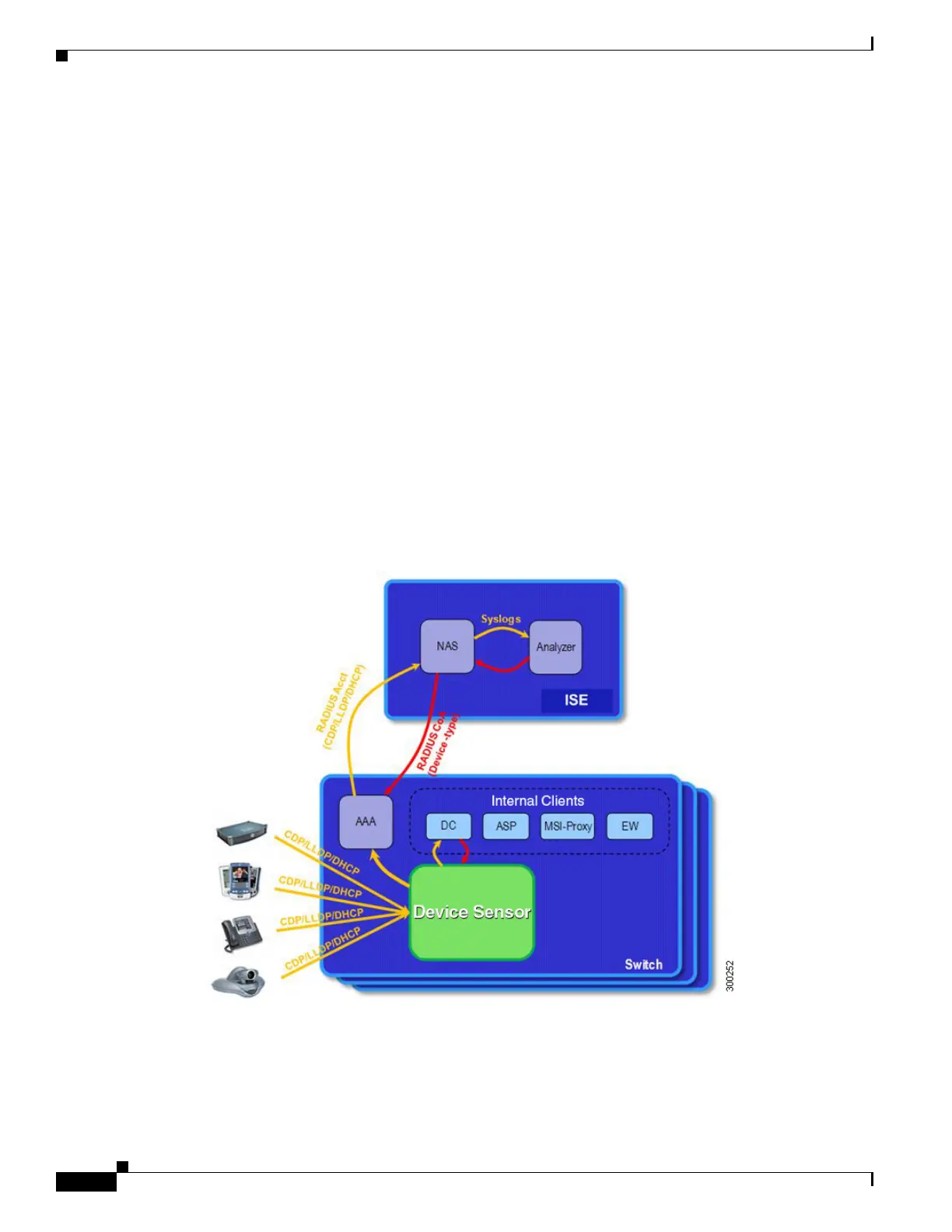46-118
Software Configuration Guide—Release IOS XE 3.6.0E and IOS 15.2(2)E
OL_28731-01
Chapter 46 Configuring 802.1X Port-Based Authentication
Configuring Device Sensor
About Device Sensor
Device Sensor uses protocols such as Cisco Discovery Protocol (CDP), Link Layer Discovery Protocol
(LLDP), and DHCP to obtain endpoint information from network devices and make this information
available to its clients. Device Sensor has internal clients, such as the embedded Device Classifier (local
analyzer), Auto Smartports (ASP), MediaNet Service Interface Media Services Proxy, and EnergyWise.
Device Sensor also has an external client, Identity Services Engine (ISE), which uses RADIUS
accounting to receive and analyze endpoint data. When integrated with ISE, Device Sensor provides
central policy management and device-profiling capabilities.
Device profiling capability consists of two parts:
• Collector--Gathers endpoint data from network devices.
• Analyzer--Processes the data and determines the type of device.
For more information on device profiling, see the “Configuring Endpoint Profiling Policies” chapter in
the Cisco Identity Services Engine User Guide at this URL:
http://www.cisco.com/en/US/docs/security/ise/1.1/user_guide/ise_prof_pol.html
Device Sensor represents the embedded collector functionality. Figure 19shows a Device Sensor in the
context of its internal clients and the ISE.
Figure 19 Device Sensor and Clients
Client notifications and accounting messages that contain profiling data and other session-related data
are generated and sent to the internal clients and the ISE. By default, client notifications and accounting
events are generated only when an incoming packet includes a Type-Length-Value (TLV) that has not

